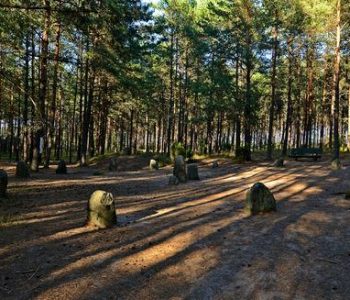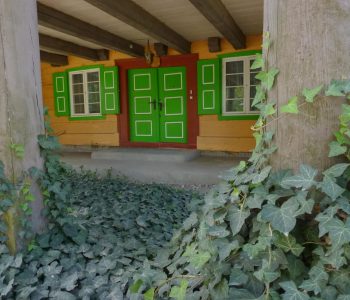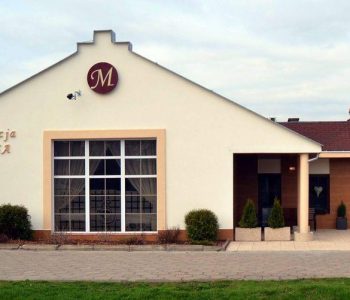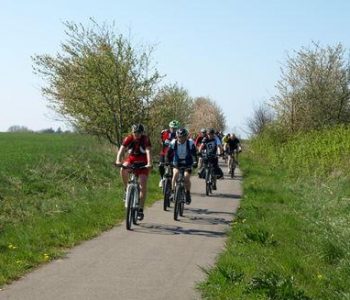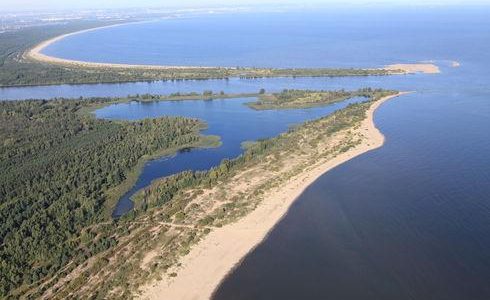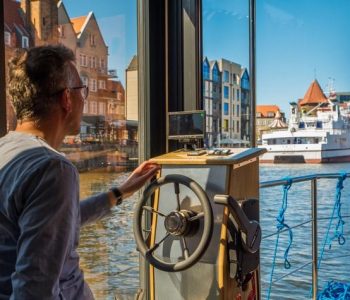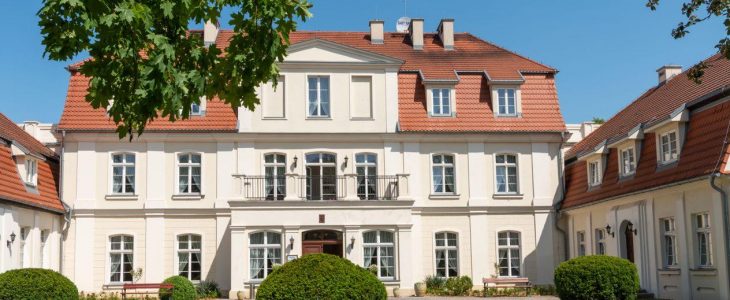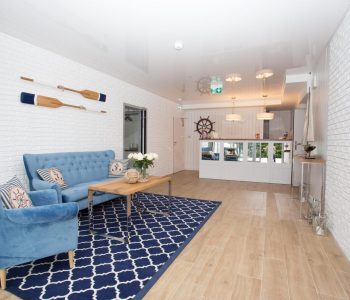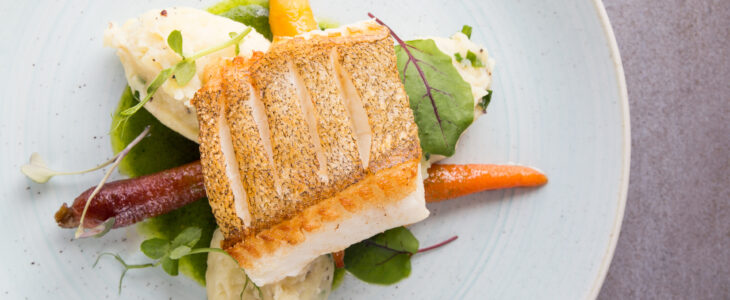Ahoy!
Pomorskie invites all sailors to experience both the Baltic Sea, with well-developed infrastructure of the Bay of Gdańsk and shallow waters of the beginner-friendly Bay of Puck, as well as our inland waters, with the picturesque Kashubia Lake District, with its beautiful Charzykowskie lake. We also recommend exploring the Żuławy Loop (Pętla Żuławska). It’s a marvellous waterway with enormous tourist potential, which joins Wisła (Vistula), Martwa Wisła, Wisła Królewiecka, Nogat, Szkaprawa, and Wisła Śmiała Rivers. The Loop is also part of the E70 International Waterway.
If you’re interested, check out the 2017 events calendar. The number of events in the entire region gives a broad choice of regatta to both fans and participants. We would like to direct your attention towards several events that are, in our opinion, especially interesting. Firstly, we would like to invite all to Targ Rybny (Fish Market) in Gdańsk. Saturday, May 6, is the official inauguration of sailing season. Like every year, organisers have prepared numerous attractions for this day, including a boat parade on Motława River. Make sure to book your weekend, May 26-28, for the fifth edition of Trójmiasto Sailing Cup. Its initiator is the Olympic champion Mateusz Kusznierewicz, who says that since its beginning the idea of the event was to integrate all sailing circles. Three cities host the regatta: Gdańsk, Sopot, and Gdynia. Participants compete on Saturday and Sunday. If you would like to be part of regatta’s audience, the best spots are Brzeźno and Sopot piers. Inauguration of sailing season is also planned in Gdynia on the same weekend.
Beginning June 23, the Gdańsk district of Górki Zachodnie will for a week become base of Nord Cup 2017, an event during which participants compete in different categories, and routes are set along places like Stogi beach in Gdańsk. Also in Gdańsk, on July 29, the 21st edition of the largest international sailing event held in this city, Baltic Sail 2017, will take place. Join us at Motława waterfront at Targ Rybny, where all boats involved in this particular event will be open to visitors. After Baltic Sail is finished, we move to Gdynia to the 18th edition of Volvo Gdynia Sailing Days. The event will be full to the brim with different-category of regattas, and many accompanying events. The last obligatory item on the list for all fans of top-class sailing is Energa Sopot Match Race 2017, the most spectacular sailing competition. On August 2-5, near Sopot Pier, Olympic champions, world champions, and participants of events like America Cup, will take part in “one on one” competitions taking place on pre-determined routes. Match racing kind of events are everyone’s favourite, mainly because of the fact that their rules are clear even to laymen. Short, 20-minute races, are won by the boat that first crosses the finish line. Courses are set so that people who observe the race from the Pier can see everything that is going on the water.
SAILING THE SEAS
The Bay of Gdańsk, located on the south-western edge of the Baltic Sea together with the Bay of Puck, which is its western part, has naturally become a perfect sailing spot. The area is considered internal waters, and it’s known as the Polish “vestibule” of the Baltic Sea.
The boundary between open sea and bay waters is set by a line that connects Cape Rozewie with Cape Taran, located on Sambia Peninsula (part of the Russian Federation, known for the largest industrial amber deposits in the world). For years, the bay has been perfectly adapted to various forms of water recreation, both amateur and professional. A wide network of marinas and sea harbours allows reaching any part of the Bay, and entering one of the cities that constitute the popular Tricity (Trójmiasto:Gdańsk, Sopot, Gdynia) is nice and easy. The more shallow Bay of Puck requires more attention on the side of sailors, and a moment of distraction can quickly verify one’s skills and, unfortunately, result in entering the shallows. Fortunately, all the shallows are well-marked, both in water and on traditional and electronic maps. To fully understand it, refer to the famous March of the Herring (Marsz Śledzia) that has been regularly taking place since 2002, and whose participants cross the Bay of Puck on foot. The only part they are required to swim is through a man-made ditch in the shallows. And although depth of the Bay of Puck limit sailing it on keel yachts, the very same conditions made the Bay into a true mecca of other water sports. These include, of course, yachts, windsurfing, and kitesurfing. Western and south-western winds dominate the Bay of Gdańsk, as well as the entire Baltic Sea.
Close proximity of cities located around the Bay of Gdańsk encourages sailing between them, not in a small part because of a project from a few years ago, called “The Ring of the Bay of Gdańsk” (Pierścień Zatoki Gdańskiej). This project aimed at modernisation and restoration of necessary sailing infrastructure, which made sailing the waters of the Bay of Gdańsk even more comfortable. Below are some suggestions of sailing the Bay of Gdańsk.
Depending on the amount of time at your disposal, the Bay of Gdańsk offers several-hour-long trips, as well as journeys up to two weeks around the Hel Peninsula that end in the open-sea marinas of Władysławowa and Łeba.
The Tricity Opportunity. Tricity makes available three marinas in the centre of each city, as well as marinas located in Górki Zachodnie. The National Sailing Centre is also located there, which also provides a boatyard and a mechanical workshop, as well as the possibility to charter sailing and motor yachts. The distance between marinas in Górki Zachodnie and Gdańsk marina is 6 nautical miles. Entering Gdańsk is in itself quite an experience. Sailing along the port channel, we experience different kinds of views, from Westerplatte on our left, then Wisłoujście Fortress, as well as shipyard and docks. Reaching the marina should take us not more than 40 minutes. It’s advisable to report your passing of Motława to the Harbor Master on channel 14, just to be on the safe side. Expect trouble finding a free parking spot for your boat during high season, especially when there are sailing rallies in town, even though organisers allow free berthing at Długie Pobrzeże from opposite of the Hilton Hotel/Baszta Łabędź (the Swan Tower) to opposite of the petrol station, with additional access to electricity.
Placing marina in the heart of the city provides a wide range of opportunities when it comes to spending your time, be it during a short stay, or a several-hour tour of the city. Among places we recommend, there is Klub Morza Zajman (Zajman Sea Club), located in the building of a 17th century granary, on Wyspa Spichrzów (Granary Island). This extraordinary place has more than 17,000 nautical exhibits placed inside. The place is also a pub.
You need to prepare yourselves to travel another 6 nautical miles if you would like to get from Gdańsk to the marina in Sopot. After passing the port channel and crossing the port approach fairway for ships entering Gdańsk Harbour, we continue along the beach. The only characteristic point passed on the way is Brzeźno Pier (without possibility of berthing). The beach that begins there continues practically uninterrupted to Gdynia. About half way the sandy shore is disrupted by the Sopot Pier, at the end of which the Sopot Marina is located.
The youngest of the Tricity marinas was put into use in 2011. It’s the only marina in Poland located several hundred metres into the sea. Both entering and leaving the marina shouldn’t be a bigger problem, the depths are sufficient, and there are no shallows to be afraid of. After arriving in Sopot, there is plenty to do, so no one should say the place is boring. Besides one of the most popular boulevards in Poland, the city’s tourist offer is broad, and numerous events that take place during summer should accommodate anyone. For sailors who wish to remain in the marina awaits the Meridian restaurant, located at the very end of the pier. Above the restaurant, the harbourmaster’s office is located. Each year at the turn of July, Sopot hosts the Sopot Match Race, the ISAF Match Racing World Championship preliminaries.
The last (but not least) Tricity’s marina, facing away from Gdańsk, is Gdynia Marina.
It’s the largest of three marinas, located also in the centre of the city, next to the city beach. Entering the marina with a yacht isn’t complicated, as long as you stick to the designated track. Several metres towards the shore, there is a slight shallowing, where on numerous occasions people can be seen. Taking into account traffic in the marina, number of vessels, as well as other factors – such as children in sailing schools – the approach width may seem a bit tight. This is why it is so important to carefully observe the water, and any vessels that may be approach us from the breakwater’s side. The harbourmaster on duty can be reached on channel 12, although it is common practice to use cell phone, as channel 12 is also the channel of Gdynia port’s channel (of course, harbour administration can be reached on channel 12). Because of high occupancy, we advise to contact the harbour administration in order to receive a proper place, especially that high season sees marina quite busy. Besides all the necessary facilities, marina in Gdynia offers a bar as well as sailing shop. What’s more, several sailing clubs have their offices here. Take a look at the deviation dolphin located about 40 metres from the shore, in near proximity to the breakwater covering the marina. On top of it, there is a two-metre figure of a boy with a baton, the so-called Dreamer, or the Conductor of Waves.
Sailing out from the marina, we set sail further, towards the Bay of Puck – the wester, more shallow part of the Bay of Gdańsk. Bear in mind that sailing these waters with a keel boat can take place only in specifically designated places, and large, local shallowings have surprised many helmsmen. Of course, sticking to signs and markings on the water will make our trip safe and enjoyable. Before we get there, however, there is a most characteristic building awaiting us. After crossing the farwater, we move north towards Rewa Salient. There, opposite Babie Doły district, several hundred metres away from the shore, are the ruins of a World War II torpedo station. Even though ideas for developing this post-war construction surface from time to time, none of them have been brought to life. Among them, there was the idea of creating a conference centre with a marina and diving centre. Groups of divers can still be spotted in the vicinity of the torpedo station. Approach is possible from sea side, however we would strongly advise against any such attempts, dropping anchor near the torpedo station is also not the best idea, as pieces of concrete debris are scattered around the bottom. The second torpedo station (the so-called Formoza) is located in Oksywie, and soldiers are still stationed there.
The western part of the Bay awaits for sailors with Puck, one of the oldest Polish port cities. For centuries, fishing was its dominating function. In time, however, trade began to dominate. Puck was probably most proud as a port in the 16th century, when it twice served as main base of operations for Polish war fleet. To reach Puck, we need to set a course on the only keel boat-friendly crossing, the so-called “głębinka” , a man-made ditch in the shallows famous because of the annual “March of the Herring”. From there, we sail to Rzucewo buoy (RZUC), and then to Puck buoy (P-K). At this point, we need to be on the lookout for a visible leading mark. The port, which at the same time is also a fishing harbour, can accommodate boats up to 20 metres in length, and draught up to 2.8 metres. The harbourmaster can always be reached on channel 10. If you’d like to learn more about Puck, you can read about its history here. And if you’d like to change a rocking boat for a bike… make sure to check out an interesting cycling route, “The Ring of the Bay of Puck”.
Our next stop is Jastarnia port. Firstly, we head towards Jastarnia beacon (JAS), known also as a crib. From this point, we set a course according to leading lights’ indications. The distance from the JAS beacon to port entrance is about 1000 metres. The port has a fishing harbour, a marina (actually, two marinas: LOK and Marina Jastarnia), and a berthing place for water bus line 520 that comes from Gdynia (all information will be provided by the harbourmaster on channel 10 UKF). Jastarnia is a peculiar place, especially since in the 1930s because of general Mariusz Zaruski it became the cradle of Polish sea sailing. The wooden schooner “Zawisza Czarny” , and after the war – sailboat “Generał Zaruski” became city’s symbols. As with most seaside cities and towns, Jastarnia began as a fishing settlement, and it remained so for a long time. Until this day, fishing boats are berthed there, and the city’s atmosphere cannot be mistaken for anything else. Of course, placing a marina and a fishing harbour in one spot has its advocates, as well as vocal opponents, but this is what makes every trip to the peninsula unforgettable. And hundreds of seagulls that follow fishing boats will constantly remind us of where we are. Here, we obviously recommend trying one of the fresh Baltic fish, or… a visit to the port bar, where delicious pizza has been prepared for years. It’s worth noting that an idea had been put forward of adapting a small, concrete building (former measuring point of the German torpedo proving ground) that sticks out of water near Jurata pier into a floating restaurant. The idea, of course, assumed the possibility of docking to provide a unique experience of having a meal on water. Unfortunately, it has never become more than a concept.
We have reached our final destination in the Bay of Gdańsk: port in the town of Hel. It’s probably the most popular town, located on a peninsula of the same name. During season, this small coastal city bursts at the seams, and a car drive can take up to several hour (from Gdynia to Hel, about 75 kilometres, can turn into one hell – pun intended – of a ride in peak weekend traffic). Fortunately, we’re taking a boat, so we’ll just have to wait for a yacht that leaves the marina. Here, we would like to take a moment to strongly recommend taking the water route in this time of season. Visiting Hel from Gdańsk, Sopot, and Gdynia in summer is possible by taking one of the water buses. If we decide visiting Hel marina by yacht, we don’t have to worry about complications on entrance. The port is located on the inner side of the peninsula, so coming in from open sea we just need to pay attention to the shallows near the salient that are marked by the southern cardinal mark. Then, we turn north and look for a characteristic, white, egg-shaped building (some prefer to compare it to an onion, though
Until now, we have sailed only on inner waters. It’s time to head out to open sea. Destination: Władysławowo. We sail around the peninsula, and head west. Before us, 18 nautical miles of sailing along the peninsula. Provided, of course, the wind is on our side. We head towards Władysławowo buoy (WŁA). After passing it, a safe course – also set by leading lights – is 260. On the right side of the breakwater, we had to the port entrance (before entering any port, we recommend taking a look at the maps, and for any warnings please consult the Hyrographic Office). Berthing places are located at the yacht wharf (designated part of Władysławowo port – the largest fishing harbour in Poland), and there’s not too many of them. The docking toll includes water and electricity. However, toilets are charged additionally. The Harbourmaster can be reached on channel 10 UKF. Due to the fact that we are in a fishing harbour, we will have the opportunity to hear fishing boats each day, especially those coming back from the sea. All because of seagulls that follow them. Everyday, you can buy fresh fish straight out of the fishing boat. After a strenuous journey, we recommend visiting the Olympic Preparations Centre in Cetniewo, where guests can enjoy the swimming pool, sauna, cryogenic chamber, and tennis courts, among others. Due to its location, Władysławowo is a very popular and frequented spot for sailors, especially those who plan on sailing further into the sea.
The final yacht marina in the coastal part of Pomorskie is Łeba. Approaching it, we need to be on the lookout for Łeba buoy, and then the sector lights visible between the heads. In favourable conditions, approach shouldn’t present any problem, but it’s good to report the intention of entry to the harbourmaster (VHF 12,16) or the marina (VHF 12,16,17). They will instruct us on anything related to approach conditions. There are some shallows in the vicinity of the port, which in worse conditions and larger waves, unfortunately, had surprised many experienced sailors. The marina is a well-developed complex, and according to many sailors still the best on the entire Polish coast. The city encourages visitors with a rich tourist offer, about which you can learn more here. We recommend the only 3D labyrinth in Poland, as well as visiting the famous moving dunes located within the premises of Słowiński National Park.

